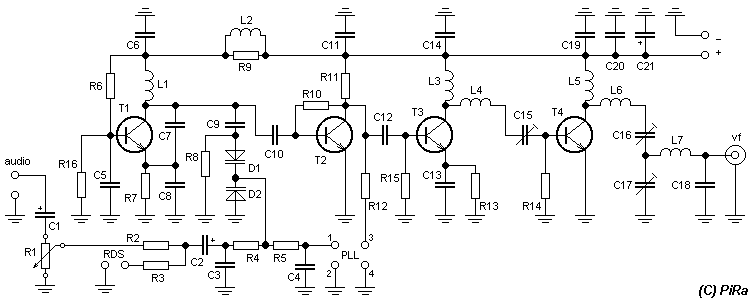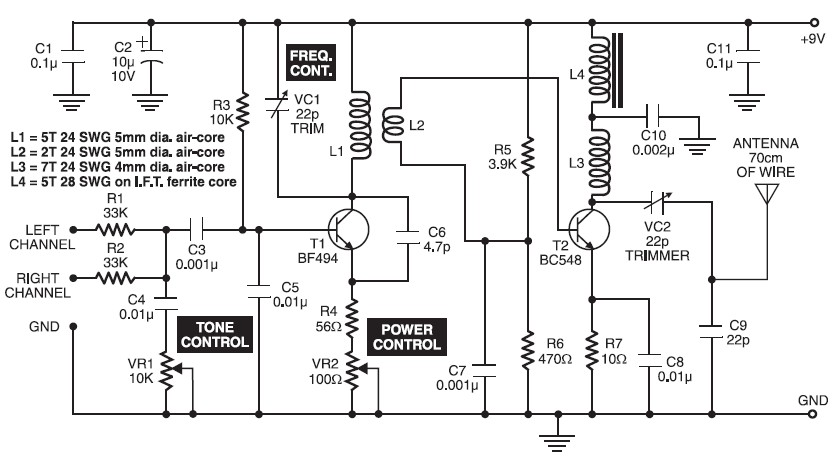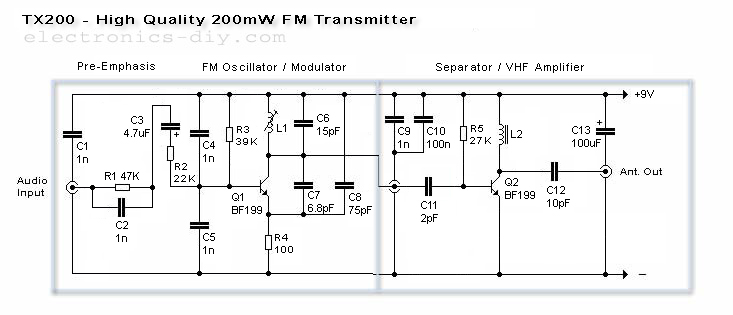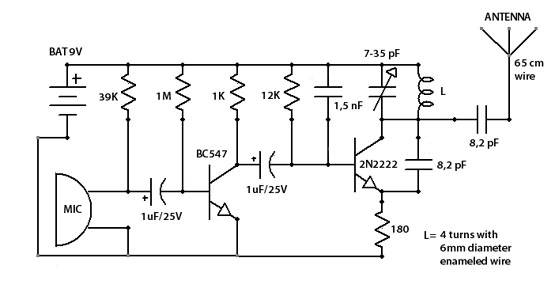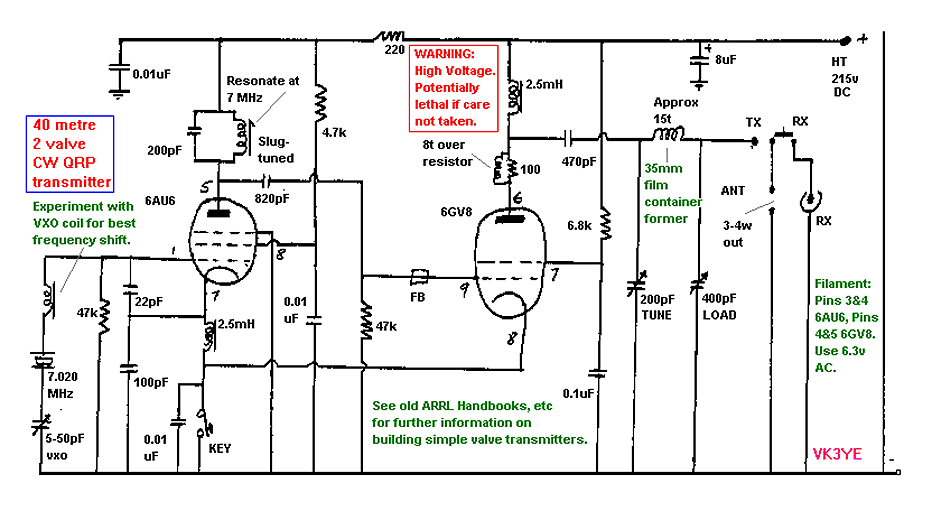
Solar Powered Long Range FM Transmitter
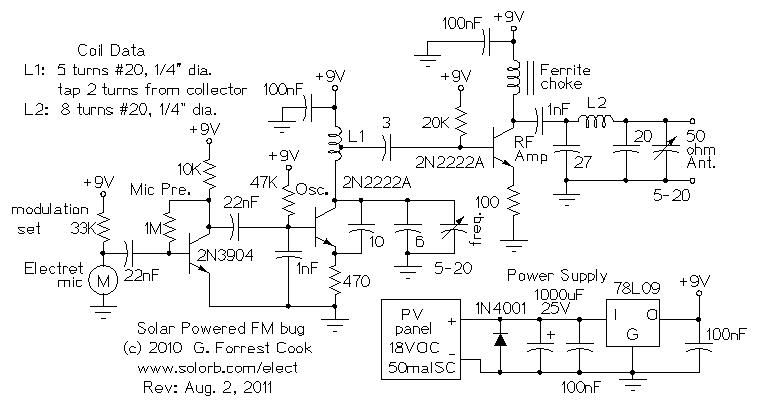
Numerous miniature FM transmitter bug circuits are available online; however, this particular design is distinctive as it operates entirely on solar power, eliminating the need for a battery. The transmitter will function as long as sunlight is incident on the photovoltaic (PV) panel. This transmitter bug is beneficial for various applications.
The solar-powered FM transmitter circuit consists of several key components that enable its operation without reliance on traditional power sources. The primary element is the photovoltaic panel, which converts sunlight into electrical energy. This panel is typically rated for a specific voltage and current output, ensuring sufficient power supply for the circuit.
The circuit design includes an oscillator stage, which generates the radio frequency signal. This stage may utilize a transistor or integrated circuit configured to oscillate at the desired frequency, typically within the FM band. The oscillator's output is then fed into a modulator, which superimposes audio signals onto the carrier wave. Audio input can be sourced from various devices, such as microphones or audio players, allowing for versatile applications.
An antenna is also an essential component, enabling the transmission of the modulated signal over the air. The design may incorporate a simple wire antenna, optimized for the operating frequency to enhance transmission range and clarity.
To ensure stable operation under varying sunlight conditions, a voltage regulator or a capacitor may be included in the circuit. This component helps maintain a consistent voltage level, allowing the transmitter to function effectively even during fluctuating light conditions.
Overall, the solar-powered FM transmitter bug circuit presents an innovative solution for wireless audio transmission, leveraging renewable energy sources for sustainable operation. The simplicity of its design, combined with the absence of batteries, makes it an attractive option for various applications, including surveillance, hobby projects, and educational purposes.There are many miniature FM transmitter bug circuits online, this one is unique in that it runs completely on solar power. No battery is required. As long as the sun is shining on the PV panel, the transmitter will transmit. The transmitter bug is useful as a . 🔗 External reference
The solar-powered FM transmitter circuit consists of several key components that enable its operation without reliance on traditional power sources. The primary element is the photovoltaic panel, which converts sunlight into electrical energy. This panel is typically rated for a specific voltage and current output, ensuring sufficient power supply for the circuit.
The circuit design includes an oscillator stage, which generates the radio frequency signal. This stage may utilize a transistor or integrated circuit configured to oscillate at the desired frequency, typically within the FM band. The oscillator's output is then fed into a modulator, which superimposes audio signals onto the carrier wave. Audio input can be sourced from various devices, such as microphones or audio players, allowing for versatile applications.
An antenna is also an essential component, enabling the transmission of the modulated signal over the air. The design may incorporate a simple wire antenna, optimized for the operating frequency to enhance transmission range and clarity.
To ensure stable operation under varying sunlight conditions, a voltage regulator or a capacitor may be included in the circuit. This component helps maintain a consistent voltage level, allowing the transmitter to function effectively even during fluctuating light conditions.
Overall, the solar-powered FM transmitter bug circuit presents an innovative solution for wireless audio transmission, leveraging renewable energy sources for sustainable operation. The simplicity of its design, combined with the absence of batteries, makes it an attractive option for various applications, including surveillance, hobby projects, and educational purposes.There are many miniature FM transmitter bug circuits online, this one is unique in that it runs completely on solar power. No battery is required. As long as the sun is shining on the PV panel, the transmitter will transmit. The transmitter bug is useful as a . 🔗 External reference
